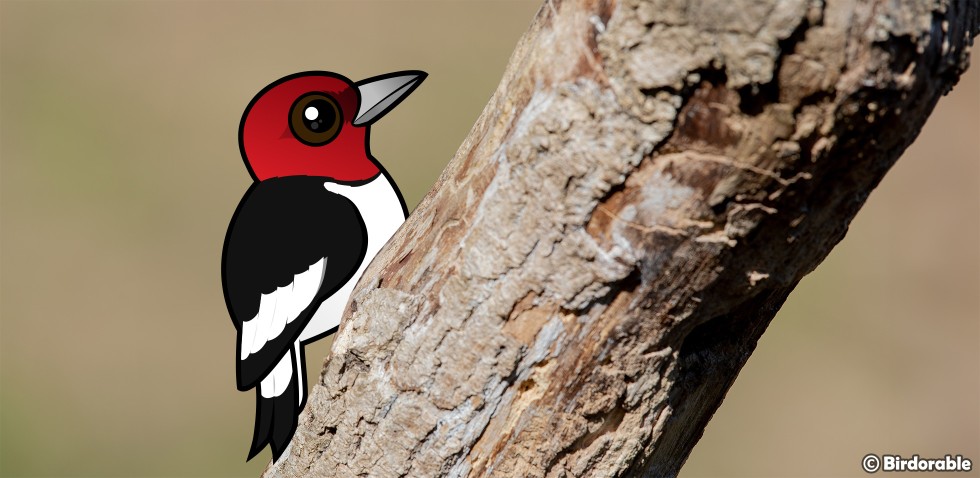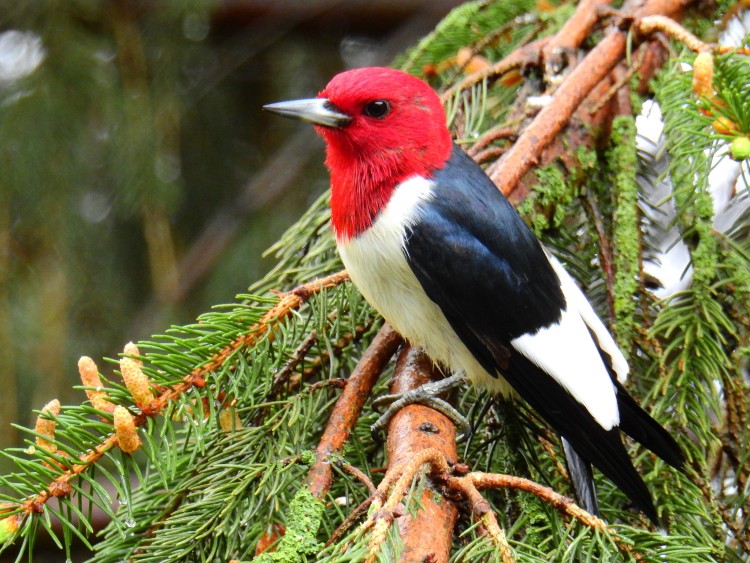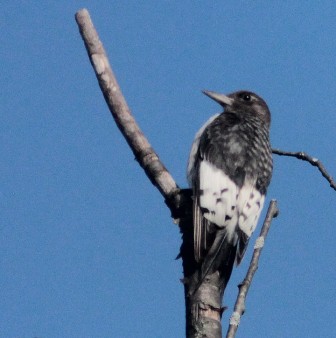Species Profile
Discover the Red-headed Woodpecker: A Striking Bird with Unique Habits

The Red-headed Woodpecker is one of the most striking birds in North America, easily recognizable by its bold crimson head, white body, and black wings with large white patches. This vibrant bird stands out in both appearance and behavior, making it a favorite among birdwatchers. With its distinctive look and fascinating habits, the Red-headed Woodpecker has earned its place as one of the most interesting species of woodpeckers.
Unlike many woodpecker species, the Red-headed Woodpecker doesn’t solely rely on drilling into wood to find food. While they do forage for insects beneath tree bark, they are also skilled at catching insects in flight. These birds are particularly agile in the air, swooping and snatching insects in mid-flight, much like flycatchers. This impressive ability sets them apart from other woodpeckers that stick to more traditional foraging methods. Finding food in unique ways contributes to Red-headed Woodpeckers being considered the most omnivorous woodpecker species in North America.

Red-headed Woodpecker by Ken Gibson (CC BY 2.0)
Red-headed Woodpeckers are also known for their habit of storing food. In autumn, they collect nuts, seeds, and even insects, hiding them in cracks in trees or under bark to eat during the colder months. This caching behavior is crucial for their survival in winter, when food can be scarce. Gruesome fact: their favorite insects to cache are grasshoppers, who are frequently put away while still alive! The insects are crammed into hiding holes so effectively they can never escape.
These woodpeckers are cavity nesters, which means they create nest holes in dead or decaying trees. Both males and females work together to excavate a hole where they will raise their young. The availability of dead trees, or snags, is vital to their breeding success. Sadly, the removal of these dead trees for land development has contributed to the decline in Red-headed Woodpecker populations in some areas. Efforts to preserve and maintain these habitats are essential for the species' conservation.
Another fascinating aspect of the Red-headed Woodpecker is its vocalizations. These birds are quite vocal, using a variety of calls to communicate with each other. Their most common call is a loud “queeah” sound, which is often used to defend their territory. They also drum on trees to signal their presence and to communicate with mates.
Though they are striking to look at and fun to watch, Red-headed Woodpeckers face a number of challenges in the wild. Habitat loss due to deforestation and the decline of dead trees for nesting has led to a decrease in their numbers. Conservation efforts are focused on maintaining the natural habitats these birds rely on, particularly preserving old forests and encouraging the growth of oak trees, whose acorns serve as an important food source for the species.
Red-headed Woodpeckers range throughout much of the eastern and central United States, with populations ranging as far north as southern Canada. They typically live in open woodlands, particularly areas with oak and beech trees, as well as in orchards and suburban areas with large, old trees. They’re most active during the warmer months, and in some parts of their range, they may migrate short distances to find better food supplies in winter.

Juvenile Red-headed Woodpecker by fishhawk (CC BY 2.0)
Here are some more fun facts about the Red-headed Woodpecker:
-
Multiple Roles in the Ecosystem: Red-headed Woodpeckers play an important role in their ecosystems, not only by controlling insect populations but also by helping with seed dispersal. When they store nuts and seeds, some of them are never retrieved, leading to the growth of new trees.
-
Flexible Diet: Their diet includes insects, fruits, nuts, and even small animals like mice. This flexibility in food choice helps them survive in a variety of environments and through different seasons, and gives them the most-omnivorous title as mentioned above.
-
Strong Defenders: Red-headed Woodpeckers are territorial and are known to aggressively defend their nests and food caches from other birds, including larger species like crows.
-
A Bird of Many Colors: Juvenile Red-headed Woodpeckers don’t develop their namesake red heads right away. Instead, they have brownish-gray heads, and it can take up to a year for their adult plumage to fully come in. Youngsters do have the contrasting white and dark wing patches, making them as easy to recognize and identify as adult birds in the field.
-
Master Acrobats: These birds are skilled climbers, using their strong tail feathers to balance against tree trunks while foraging. They can often be seen scaling trees with ease, hopping up and down the bark in search of food.
Red-headed Woodpeckers are truly remarkable birds, with their vivid colors, unique foraging techniques, and clever food storage strategies. While their populations have seen some decline, efforts to conserve their habitats are helping to ensure that future generations will be able to enjoy these beautiful birds. Whether you spot one in your backyard or catch a glimpse of one in the wild, the Red-headed Woodpecker is sure to leave a lasting impression!













Comments
Leave a comment
Thank you!